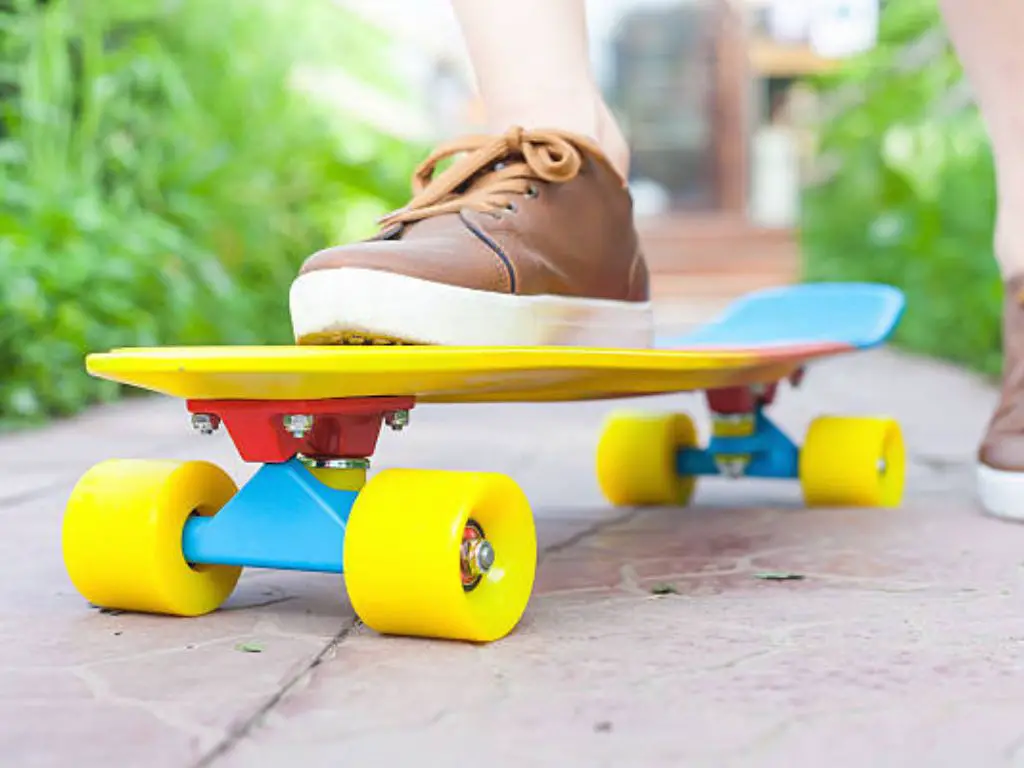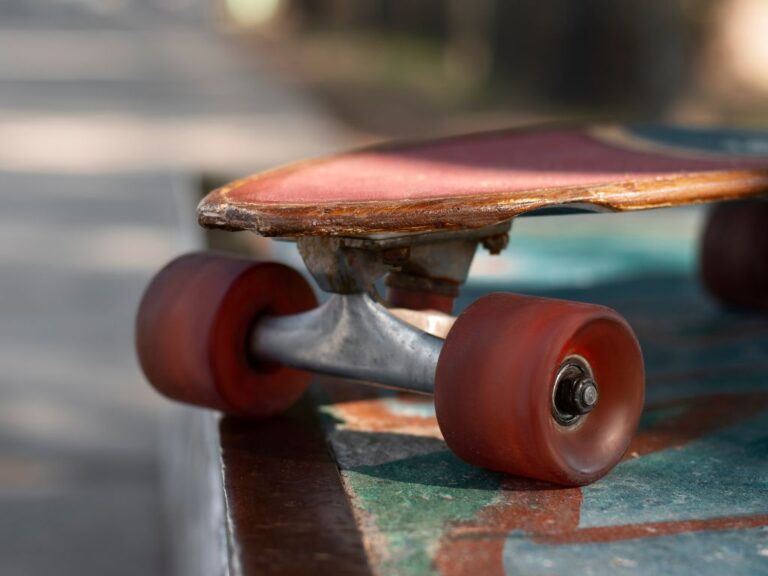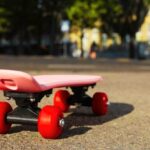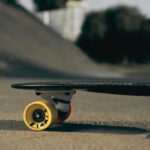When it comes to skateboarding, every detail counts—from the deck you stand on to the trucks that steer your ride. But one question often sparks debate among skaters of all levels: Does wheel size matter on a skateboard? The answer isn’t as straightforward as you might think. Wheel size plays a crucial role in how your board performs, affecting everything from speed and stability to maneuverability and control.
Whether you’re cruising through the streets, hitting the skatepark, or mastering technical tricks, choosing the right wheel size can make or break your skateboarding experience. In this guide, we’ll break down everything you need to know about skateboard wheel sizes, so you can roll with confidence and style. Let’s dive in!
Why Wheel Size Matters: Big Spins or Big Speed?
Imagine your skateboard wheels are like the tires on your car. Smaller tires might make for quick turns and sharp handling on a city street, but they wouldn’t be ideal for cruising down the highway. The same goes for skateboards! The size of your wheels significantly impacts three key aspects of your ride:
- Speed and Rolling Resistance: Larger wheels, with their increased diameter, roll faster and maintain momentum easier. They glide over cracks and pebbles that would slow down smaller wheels. Think of them as the ultimate highway cruisers! However, smaller wheels require more pushing to get going but offer more control at slower speeds, perfect for navigating tight spaces and popping tricks.
- Maneuverability and Turning: For those who love carving up bowls and landing technical tricks, smaller wheels are your friends. They allow for sharper turns, quicker pops for ollies and kickflips, and a more responsive feel overall. However, larger wheels might feel a bit sluggish when it comes to tight turns.
- Ride Smoothness and Terrain: Picture yourself rolling down a bumpy sidewalk. Larger wheels, with their increased ground clearance, act like mini-shock absorbers, smoothing out the ride. Smaller wheels might feel every bump and crack in the pavement, offering more board feel but a less comfortable ride on rough surfaces.
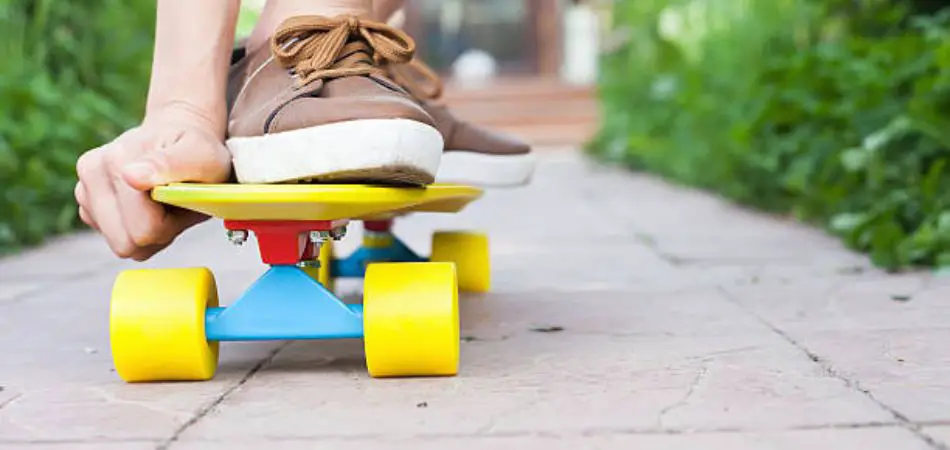
Choosing the Right Wheel Size: Find Your Perfect Match
Now that you understand how wheel size affects your skating, it’s time to find the perfect fit for your style! Here are some key considerations:
- Skateboarding Style and Discipline:
- Street Skating (50-53mm): Calling all trick masters! Smaller wheels are your go-to for their responsiveness, flip tricks, and technical maneuvering. They offer the perfect balance of control and pop for landing those sick kicks and grinds.
- Vert Skating and Bowls (54-59mm): Looking to shred bowls and conquer vert ramps? Medium-sized wheels strike a balance between speed, control, and handling transitions. They’ll give you the stability you need to launch into the air while maintaining enough pop for tricks.
- Cruising and Longboarding (60mm+): Hitting the pavement for some serious cruising or longboarding adventures? Larger wheels are your best bet. They’ll provide maximum speed, comfort, and the ability to roll over cracks and uneven surfaces with ease. Imagine carving down the street feeling like you’re floating on a cloud – that’s the magic of larger wheels!
- Rider Experience Level:
- Beginners: If you’re just starting out, larger wheels (54-59mm) can be your friend. They offer better balance and control, making it easier to learn the ropes and build confidence.
- Experienced Skaters: As you progress, you’ll have more flexibility in choosing the perfect wheel size based on your specific skating style.
- Rider Height and Weight:
- Taller or Heavier Riders: For taller or heavier skaters, slightly larger wheels (think mid-range to larger sizes) can provide additional stability and control.
Remember, these are just guidelines! Ultimately, the best way to find your perfect wheel size is to experiment and see what feels most comfortable and fun for your individual style. Don’t be afraid to try different sizes and see how they affect your skating!
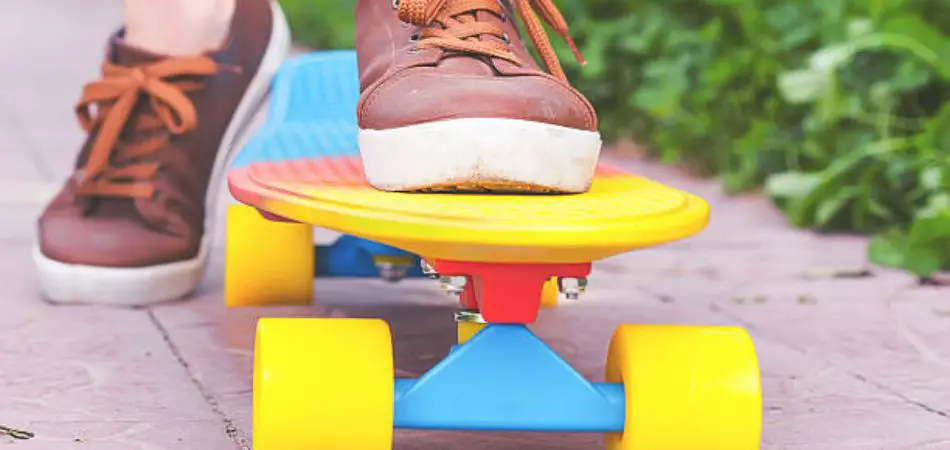
Beyond the Size – Durometer and Your Perfect Setup
We’ve covered the big kahuna of wheel size, but there’s another important factor to consider: wheel hardness, also known as durometer. Durometer is measured on a scale (typically 70a to 100a) with higher numbers indicating a harder wheel. Here’s a quick breakdown of how durometer works alongside wheel size for different disciplines:
- Street Skating: For those technical street tricks and quick responsiveness, you’ll likely want a softer wheel (around 78a-90a). These wheels offer more grip for grinding and landing those perfect flips.
- Vert Skating and Bowls: Going for vert or carving bowls? A slightly harder wheel (around 90a-95a) can be a good choice. It provides a balance of grip and rolling speed, allowing you to lock into grinds and maintain momentum on transitions.
- Cruising and Longboarding: For ultimate comfort and rolling over rough surfaces, softer wheels (around 75a-87a) are ideal. They absorb shock and provide a smooth, enjoyable ride.
Remember, this is just a general guide. Some experienced skaters might prefer a specific durometer within a discipline for their personal preferences. Don’t hesitate to chat with your local skate shop or browse online retailers to explore the wide variety of wheel size and durometer combinations available.
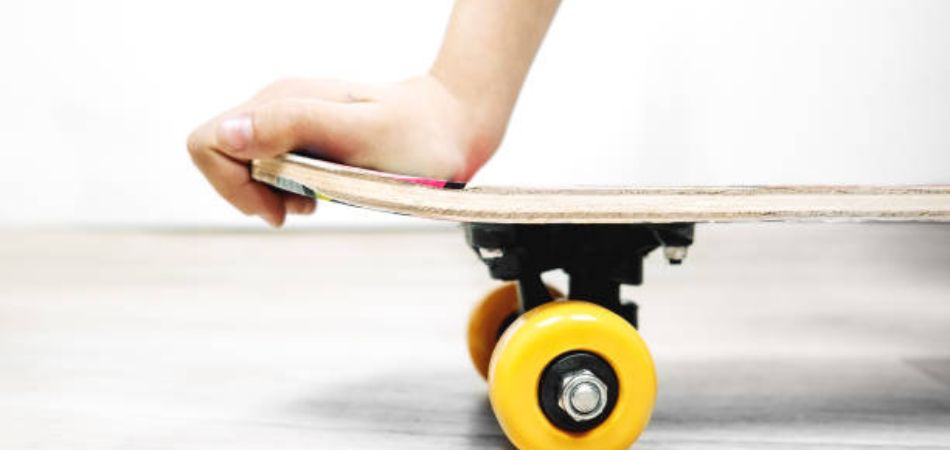
Pros and Cons of Different Skateboard Wheel Sizes
Like everything in life, there are pros and cons to different skateboard wheel sizes. Let’s take a closer look at the advantages and disadvantages of both small and large skateboard wheels.
Small wheels, with their smaller diameter, offer increased maneuverability and control. They are ideal for technical tricks and street skating, where quick rotations and precise foot placement are crucial. Small wheels are also lighter, making it easier to pop your board and get it off the ground for tricks. However, small wheels can be more prone to getting caught on cracks or rocks, which can lead to sudden stops or accidents. They may also feel less stable at high speeds and provide less grip on smooth surfaces.
On the other hand, large wheels provide more stability and speed. They are excellent for cruising, downhill riding, and vert skating, where maintaining momentum is key. Large wheels roll over cracks and pebbles more easily, allowing for a smoother ride on rough terrain. However, larger wheels can be heavier, making it slightly more challenging to perform technical tricks that require quick flicks and rotations. They also have a larger contact patch, which can make sliding and powersliding more difficult.
Real-Life Examples and Testimonials from Skateboarders
To shed more light on the impact of wheel size, let’s hear from skateboarders themselves. We reached out to several experienced skateboarders with different riding styles to get their insights on wheel size and its effect on their skateboarding performance.
John, a street skater who specializes in technical tricks, shared that he prefers smaller wheels in the 50-52mm range. He explained that the smaller diameter allows him to execute flip tricks with more control and precision. John also mentioned that smaller wheels provide a lower center of gravity, which enhances his stability during landings and grinds.
Sarah, an avid cruiser and long-distance skateboarder, expressed her love for larger wheels in the 58-60mm range. She emphasized that the larger diameter provides a more comfortable and stable ride, especially when cruising over rough pavement or uneven terrain. Sarah also mentioned that the additional grip offered by larger wheels gives her more confidence during high-speed downhill rides.
These testimonials highlight the importance of considering your riding style and preferences when choosing skateboard wheel size. It’s essential to listen to experienced skateboarders and learn from their insights, but ultimately, you must find what works best for you through experimentation and personal experience.
Keep Rolling: Pro Tips and Tricks
Here are some extra pointers to keep you rolling smoothly:
- Don’t Neglect Your Bearings: Your bearings are the heart of your wheels, allowing them to spin freely. Keeping them clean and lubricated is crucial for maintaining speed and preventing drag.
- Check Your Wheels Regularly: Wheels wear down over time, and uneven wear can affect your balance and control. Regularly inspect your wheels for cracks, flat spots, or excessive wear. Rotate them occasionally to ensure even wear and tear.
- Talk to the Experts: Feeling overwhelmed by all the choices? Don’t be afraid to chat with the friendly folks at your local skate shop. They can answer your questions, recommend specific wheels based on your style, and even help you set up your board perfectly.
- Embrace the Journey: Finding the perfect wheel size and setup is part of the skateboarding journey. Don’t get discouraged if it takes some time to experiment and find what works best for you. The process is just as much fun as landing that awesome trick!
Closing:
We hope this guide has equipped you with the knowledge to choose the perfect skateboard wheels. Remember, skateboarding is a journey of exploration and self-expression. Don’t be afraid to experiment with different wheel sizes and durometers to find what unlocks your full potential. The most important thing is to have fun, embrace the learning process, and keep rolling!
FAQ’s
Do bigger wheels make my skateboard faster?
Generally, yes! Larger wheels have a greater diameter, allowing them to roll further with each push and maintain momentum easier. They’re ideal for cruising and longboarding, where speed and smoothness are key.
Are smaller wheels better for tricks?
Absolutely! Smaller wheels offer increased flick and responsiveness, making them perfect for popping ollies, landing kickflips, and mastering technical maneuvers. They also provide better control at slower speeds, ideal for navigating tight spaces in skate parks.
What size wheels should I get for my skateboard?
Street Skating (50-53mm): Ideal for tricks and technical maneuvers.
Vert Skating and Bowls (54-59mm): Offers a balance of speed, control, and handling transitions.
Cruising and Longboarding (60mm+): Maximizes speed and comfort for long rides.
What wheel size should I start with?
arger wheels (54-59mm) are generally recommended for beginners. They provide better stability and control, making it easier to learn the basics and build confidence.
What’s the difference between wheel size and durometer?
Wheel size refers to the diameter of the wheel, while durometer (measured in a scale like 70a-100a) indicates the hardness of the wheel. Softer wheels (around 78a-90a) offer more grip for tricks, while harder wheels (around 90a-95a) provide a balance of grip and speed.
Are smaller wheels better for flip tricks?
Yep, smaller wheels (around 50mm-56mm) are a popular choice for flip tricks! They make your board lighter for flicking and popping, plus they tend to be shaped for easier slides during grinds. This makes them ideal for technical street skating.

